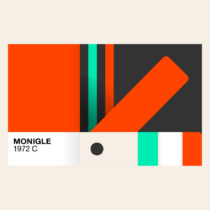Flexible Brand Management Using Digital Signage
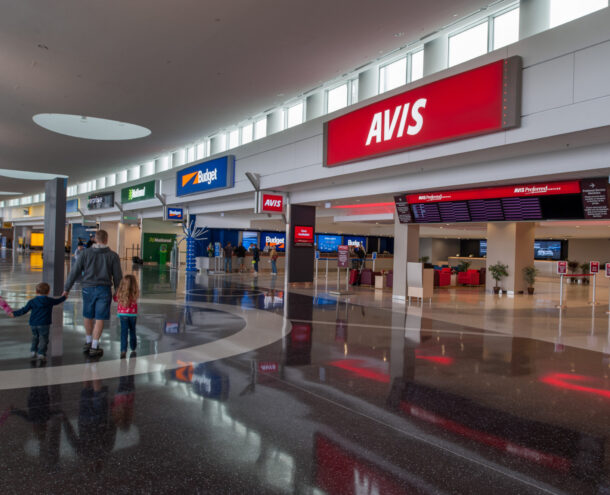
How a car rental company uses environmental branding and digital signage to gain a competitive edge.
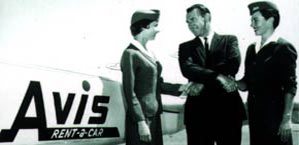
In 1946, during the earliest years of commercial aviation, Avis established the very first rent-a-car model at the Willow Run airport in Detroit. At that time, business travelers arrived on propeller driven airplanes and commonly jumped into taxis to get to their destinations. Many thought the business traveler would not want to navigate an unfamiliar city in an unfamiliar car. However, that was not the case, and rent-a-car services at airports caught on.
Those first retail rental spaces had nothing more than a small table in a corner of the air terminal, a few posters on the wall and a couple of staff. As car rentals became more popular the retail delivery system quickly evolved. By the turn of the century most rent-a-car companies leased or owned lots adjacent to or on airport property. Each company circulated its proprietary buses through the passenger arrival area picking up and dropping off customers. The surge in air travel and subsequent growth in car rentals led to traffic and congestion around airports as more cars circulated and bus fleets cycled hundreds of trips daily in response to hurried customers demanding quick and courteous service. A new solution was required to ensure key airport roads remained unclogged.
A clever design solution to get bus traffic out or reduced at airport terminals was created, known as the “consolidated rent-a-car facility” or CONRAC. These newly built spaces housed all of the rental car companies together in one large facility separate from the air terminal. Travel from the air terminal to the CONRAC was provided by moving walkways, air trains, or a single bus that made it easier to shuttle all rental car customers, regardless of brand preference.
CONRACs
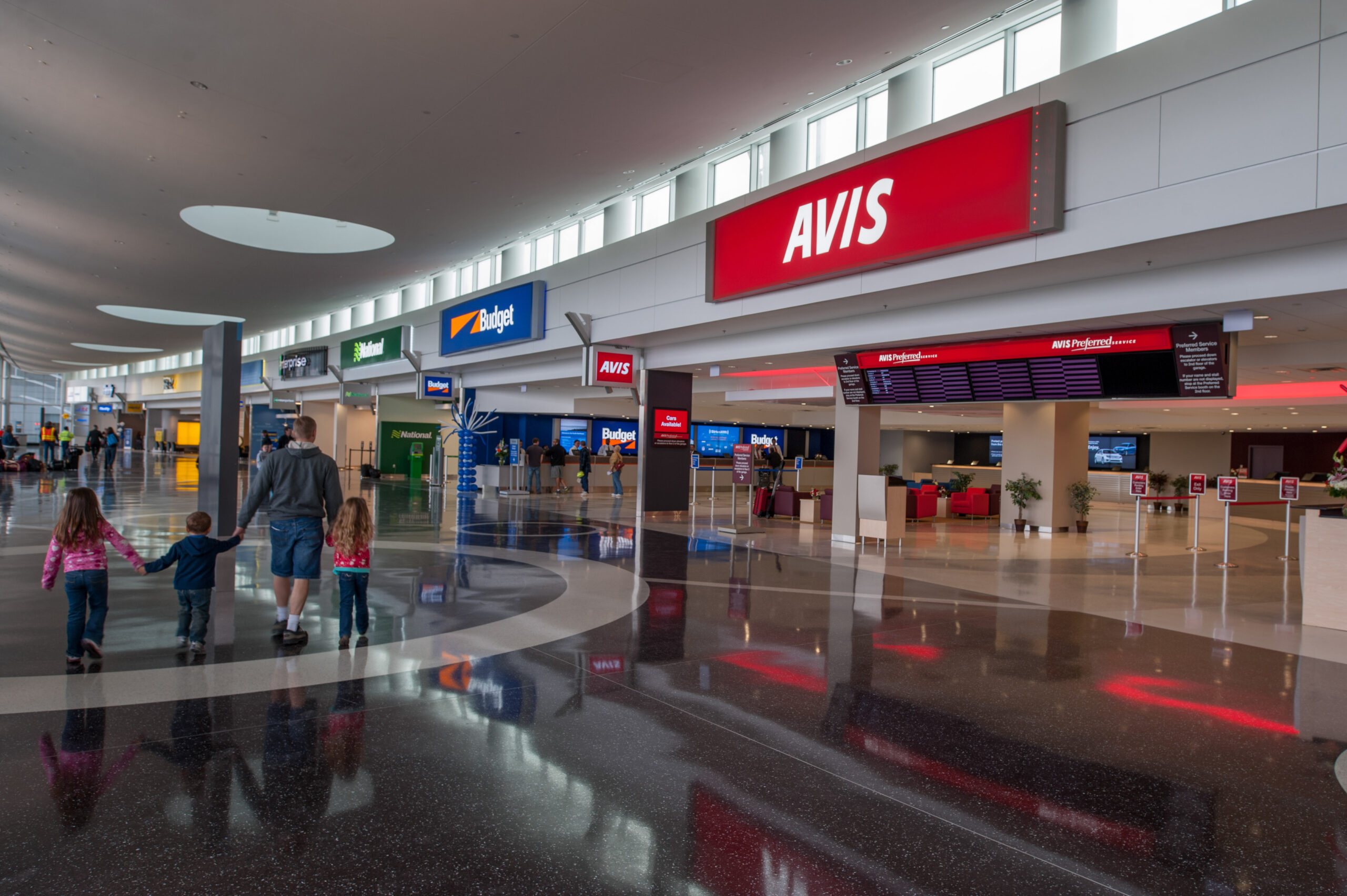
In large CONRACs, market share and bids dictate where each company is located and how much space is allotted. Rental counters are typically located side by side in a single large lobby allowing consumers to compare brands thus giving the environment a competitive edge.
Avis and Budget (both part of the Avis Budget Group) often work together using their combined market share to bid for a single lease space. This approach gives Avis and Budget upfront selection of a prominent rental counter space in front of a long wall where it can use signs and monitor displays to make a big brand statement and promote products. The wall display is an array of integrated 46” monitors with a few traditional lighted signs to anchor each brand at opposite ends of the counter.
Many rental car companies use commercial grade monitors behind their counters to promote services, but Avis and Budget do it in a different way to enhance their brand presence.
How Avis and Budget Enhance their Brand Presence:
- A pretty common length of counter for Avis and Budget is 60 feet. This provides space for 16 rental associates and 14 document printers.
- The back wall behind the counter is divided into thirds.
- The far left is typically devoted to Avis while the far right is devoted to Budget, and the center is all monitors that can run content of either brand.
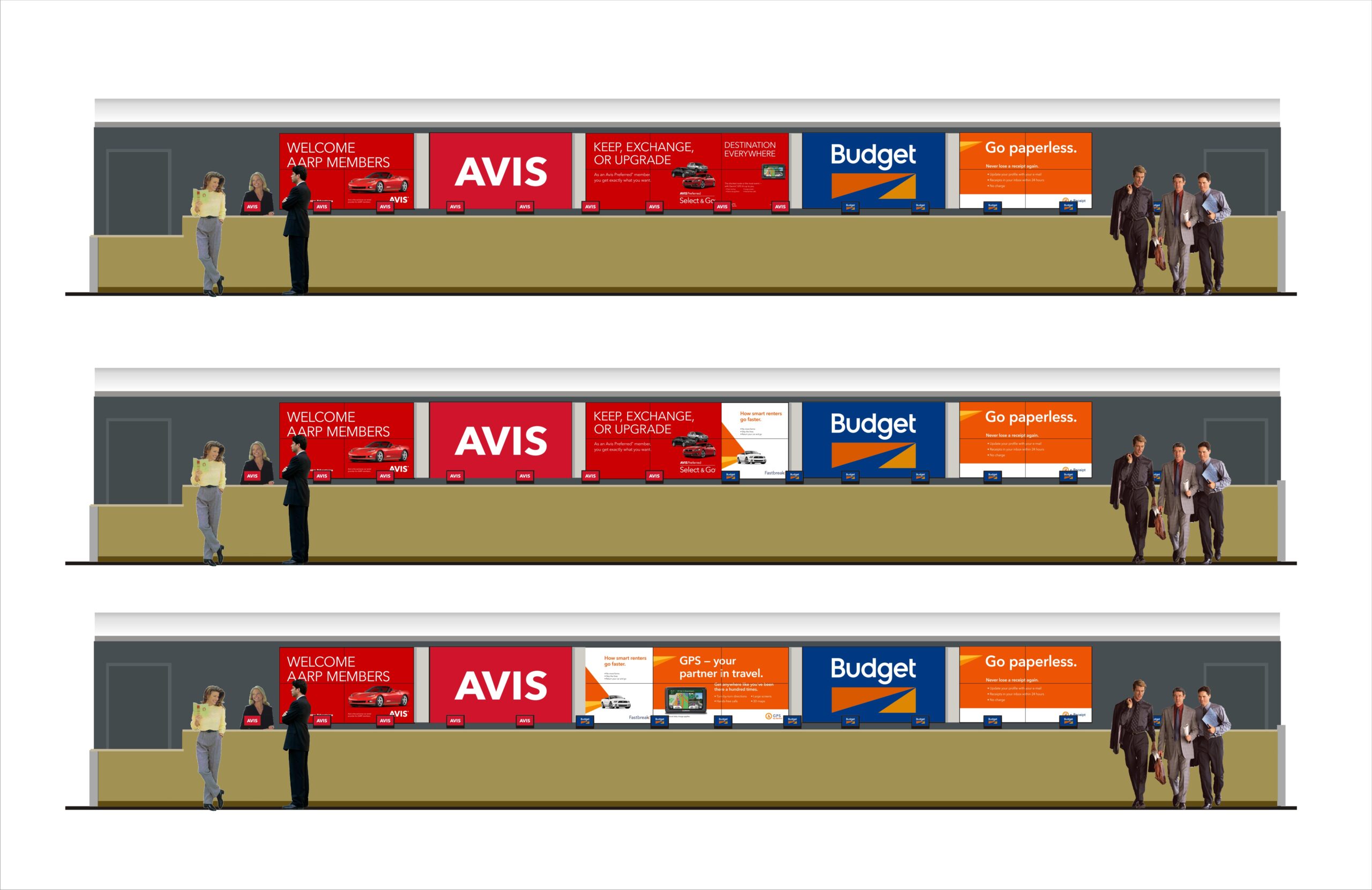
Counter rendering showing flexible use of space through digital signage. - Avis content can run all across the center 20 feet giving Avis 10 rental position and retracting Budget to 6 rental positions (first line above). The center space can also reverse and run all Budget content anchoring 10 rental positions for Budget and retracting Avis to 6 (third line above). The content in the center area can also split 50/50, providing equal branding for both companies.
The flexibility to increase and decrease the length of counter occupied by each brand makes for efficient utilization of a single lease space, helping to manage queue line wait times. This is particularly important as the brands cater to different audiences who peak at different times. Avis will typically see a heavier surge of business travel rentals during the first few days of the week, while Budget gains an uptick from leisure travelers arriving for the weekend. Avis can increase its counter space for Monday-Tuesday by running more Avis content across the 40 feet of monitors, which can then be reversed on Thursday-Friday with Budget dominating content.
Avis Budget Group’s ability to combine environmental brand management principles with digital content gives it a key competitive advantage connecting the brand with the touch points that matter to its customers. It’s a great example of a brand that delivers where the rubber meets the road.
Chuck Hahn is a Program Director on Monigle’s Environmental Branding team.
